Best chamois cream: Keep saddle sores at bay with these 12 options
Twelve chamois creams to keep your undercarriage happy during long days on the bike

Choosing the best chamois cream can be a lifesaver on the bike. It might not be the most glamorous bit of kit, but it can make your rides much more comfortable by reducing friction and preventing chafing, helping you stay in the saddle for longer. It helps lubricate skin-to-skin and skin-to-saddle contact points and suppress inflammation due to rubbing.
With the constant movement of your pedalling legs and the pressure of your body weight on a small surface area, saddle discomfort is a common problem. It's a particular issue on a hot ride, when sweating can exacerbate discomfort, on wet rides with a damp seat pad, or during back-to-back rides.
Using one of the best road bike saddles, a good pair of cycling shorts, and a good chamois cream can all make a real difference in preventing saddle sores and keeping you comfortable in the saddle.
Below I've listed 12 different options that I've got on with, from creams to solid bars, just be very, very careful not to mix them up with your embrocation!
And if you'd like some more guidance, you'll find some FAQs at the bottom of the page that might help steer you towards the best chamois cream for you.
Best chamois cream
There is an abundance of options out there, with different textures, acidity profiles, packaging, and even scents. Some even come in single-serving size sachets so you can top up on the go as required.
The good thing is that not only are they relatively cheap to try out, but they also last a long time, as you don't need much. As with saddles and shorts, it is ultimately a personal decision, so you may need to try a few out before you settle on your forever cream, but have a scroll down to see which my favourites are, and some advice on how to choose.
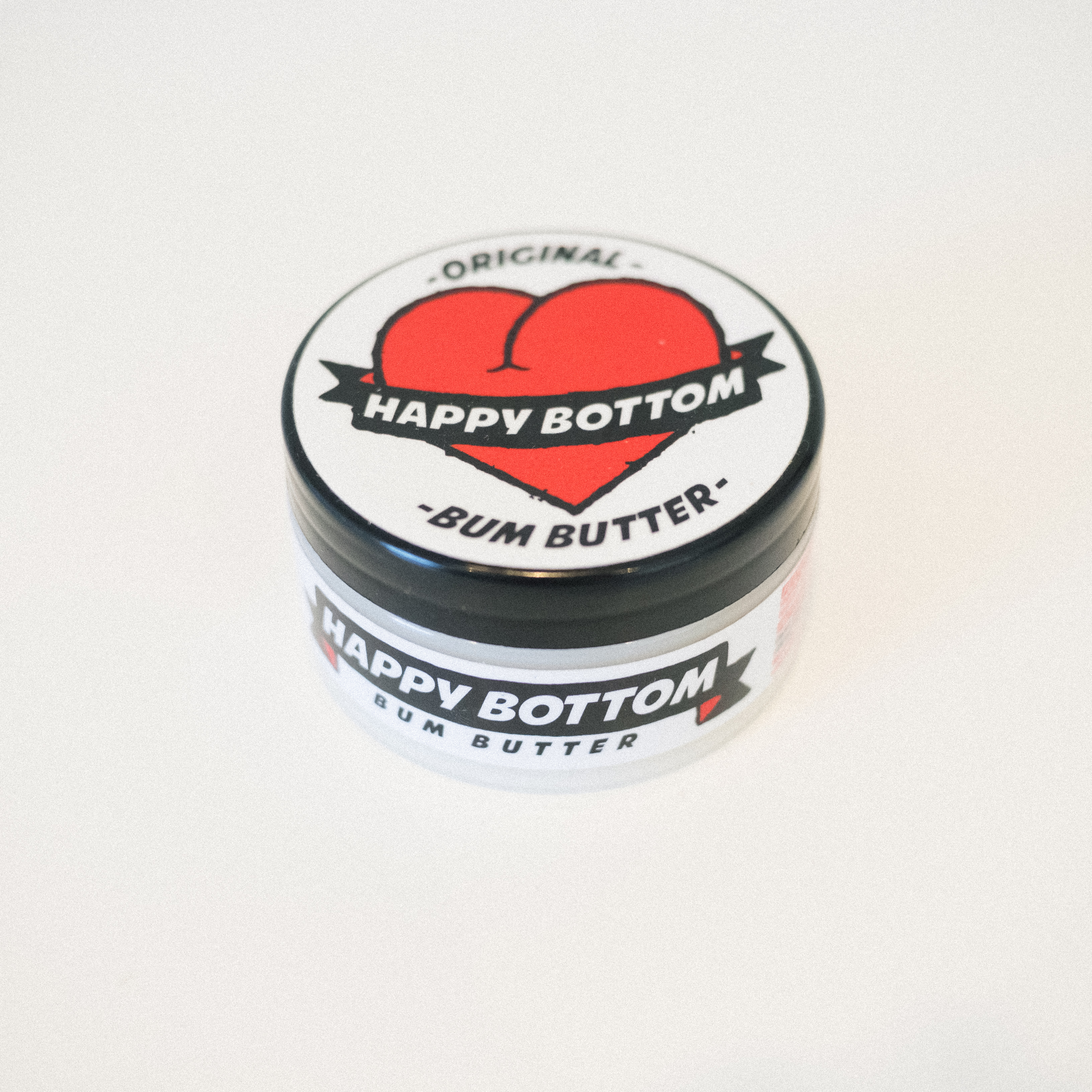
➕ Resilient without being sticky
➕ Resealable small tubs available
➖ No women's option
➖ Expensive
Happy Bottom is a solid, paste-like chamois cream that stays put and doesn’t wear out. It has a clove oil scent instead of the minty freshness of menthol options and comes in resealable travel-friendly pots. The only downsides are the higher price per millilitre and the lack of a women's pH-specific version, though you typically need less per application, so it lasts longer than expected.
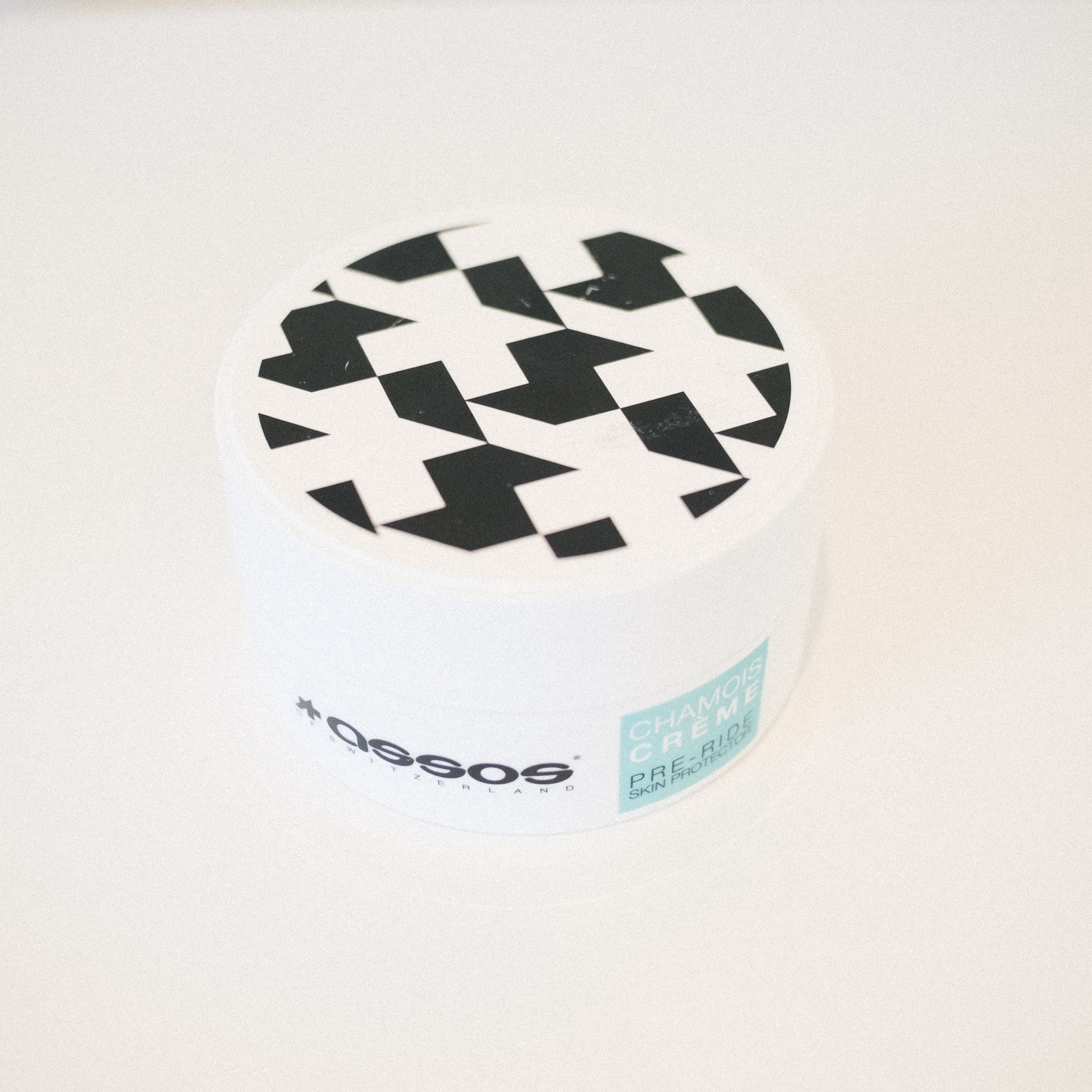
➕ Menthol tingle
➕ Women's option
➖ No portable size
Assos Chamois Crème has been my daily option for years and is the archetypal chamois cream. The consistency is a cream, but it's more solid than something like Muc-Off, so you can use a little less. It's only available in a tub, so watch out for double-dipping, with no portable sizes for mid-ride top-ups. A woman's version is available with a similar formula to the men's.
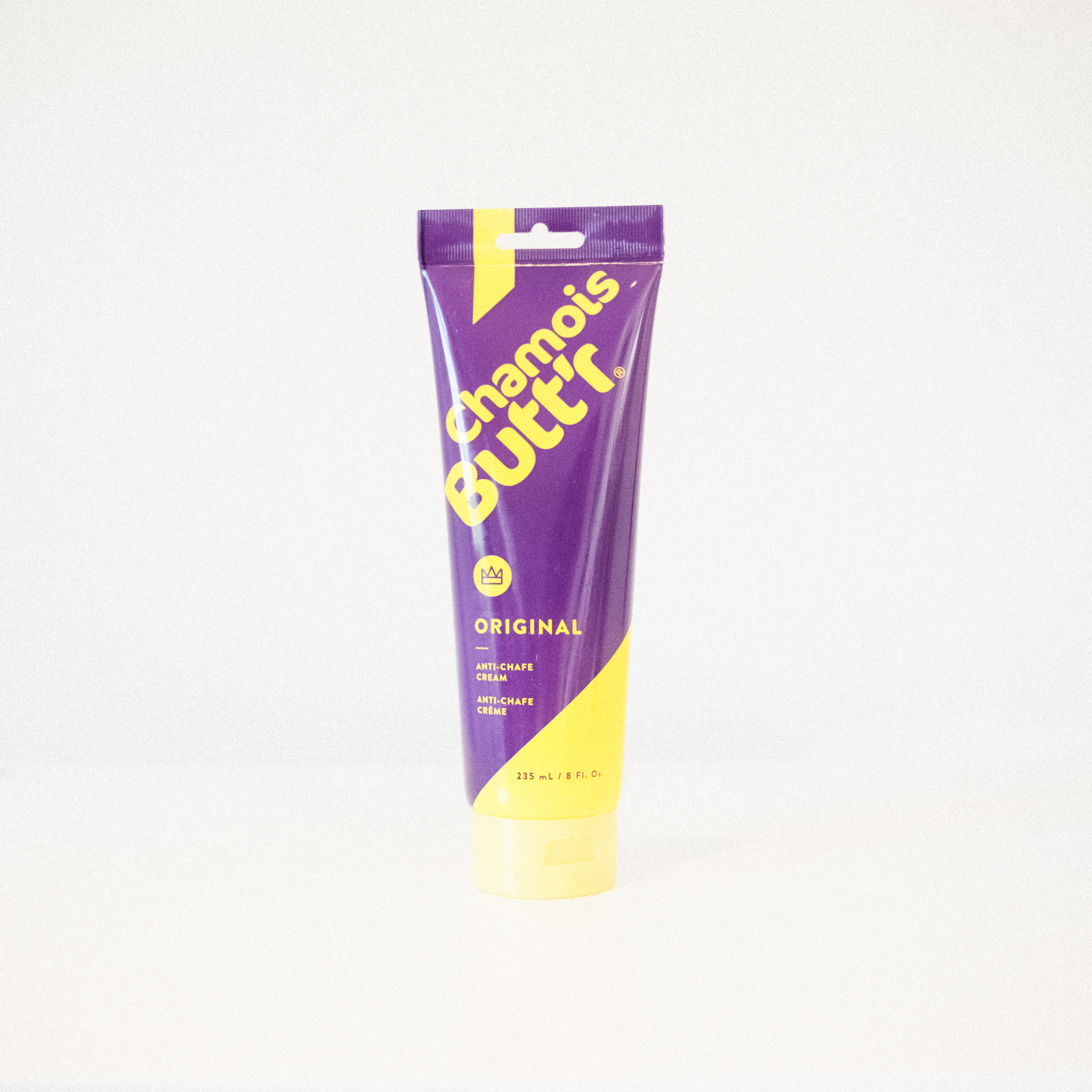
➕ Good value
➕ Natural scent
➖ A little thin
If you want value or prefer to avoid menthol, the original Chamois Butt'r is a great choice. It comes in a big tube, is the lowest price per millilitre of the bunch, and has a neutral scent. It's available in a female pH balance and in single-serving sachets to pop in your saddle bag. The only drawback is that it feels a little thinner than most of the other options, so you may need to use more.
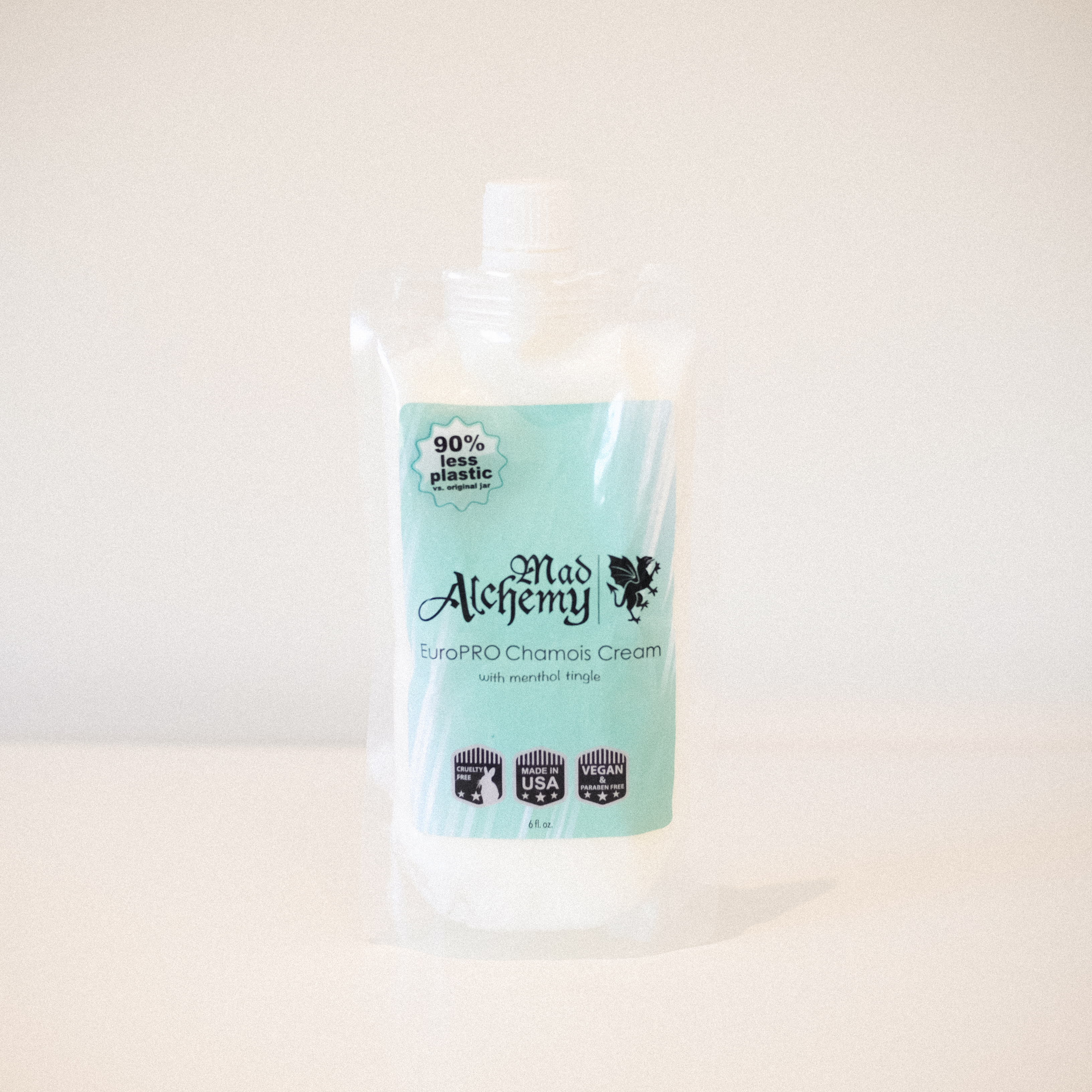
➕ Most menthol
➕ Reduced plastic
➖ Packaging less durable
You can buy Mad Alchemy in tubs, and these large sachets are billed as a refill, but there's no reason you can't just use them straight from the sachet, reducing the plastic use by 90%. The consistency is similar to that of the Assos option, but this is even more mentholated. LaFemme ditches the menthol for lavender, tea tree, and grapefruit oils. Both are vegan, cruelty-free, and made in the USA.
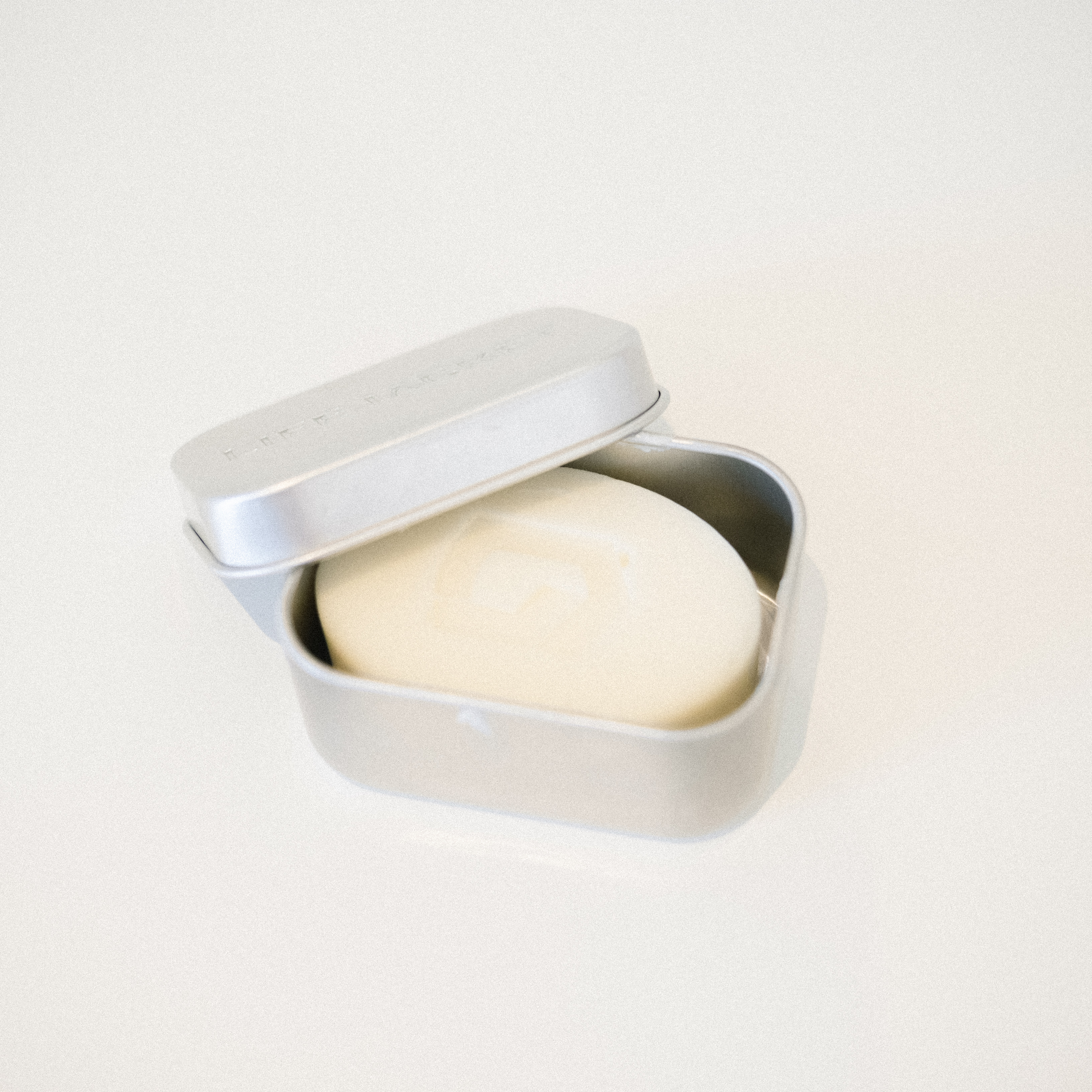
➕ Solid
➕ Durable packaging
➖ Harder to apply
➖ Expensive
Unless you're somewhere very cold or very hot, this is the only solid option on the list. Made from coconut oil, shea and cocoa butter, it melts at body temperature. Application takes a little more patience than a cream, but you get a more durable product in a handy tin that can be stowed away without fear of leakage. It's suitable for all skin types with no separate men's or women's formula.
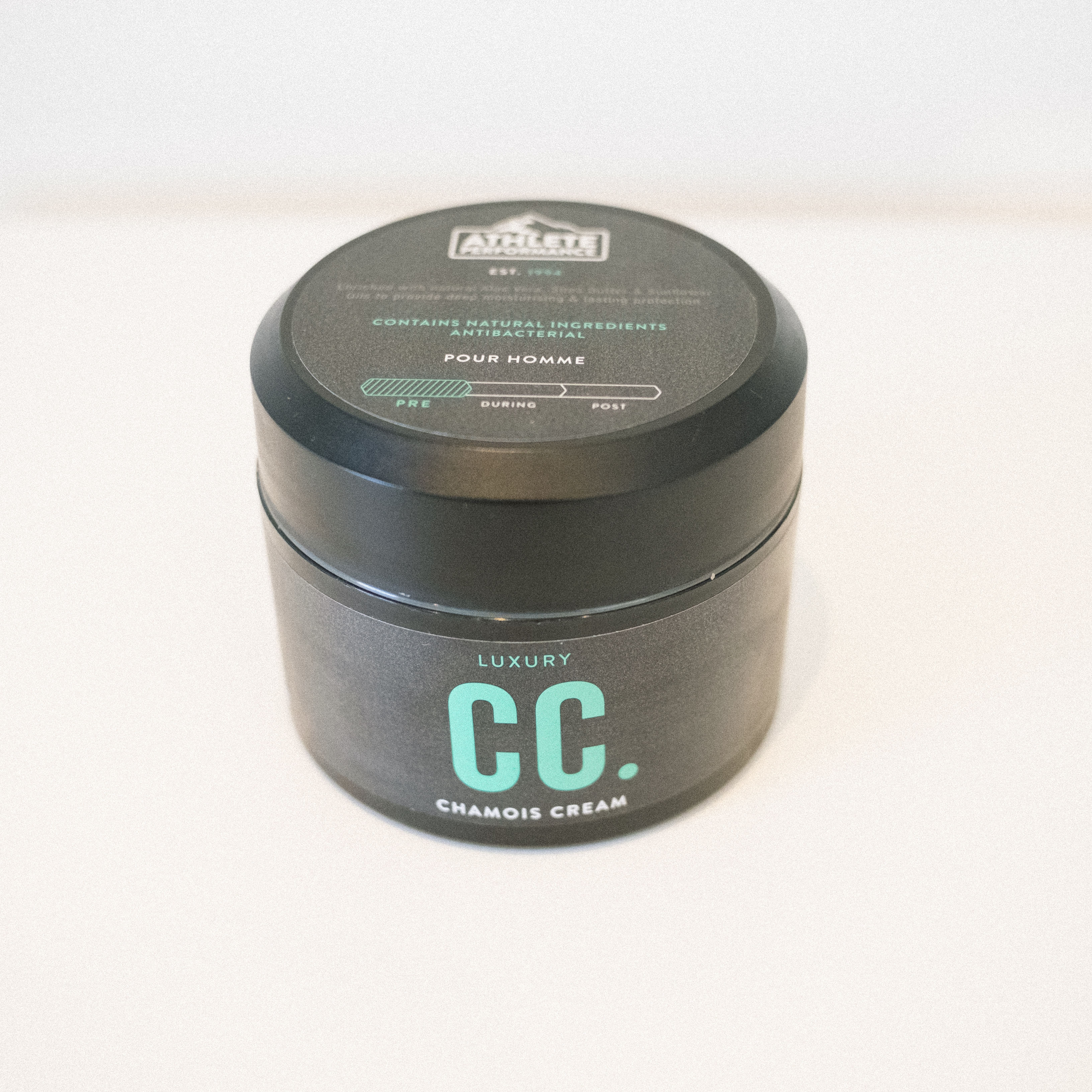
➕ Silky smooth
➕ Great smell
➖ Thinnest feeling
Muc-Off Luxury Chamois Cream has a silky, mousse-like consistency that feels lighter than other chamois creams, though you'll need to use a little more. The scent is the most pleasant of the lot, reminiscent of old-timey barber shops and talc. It comes in a large 250ml tub, so you don't need to hold back, a travel-sized sachet, and a 100ml women's pH-balanced formula.
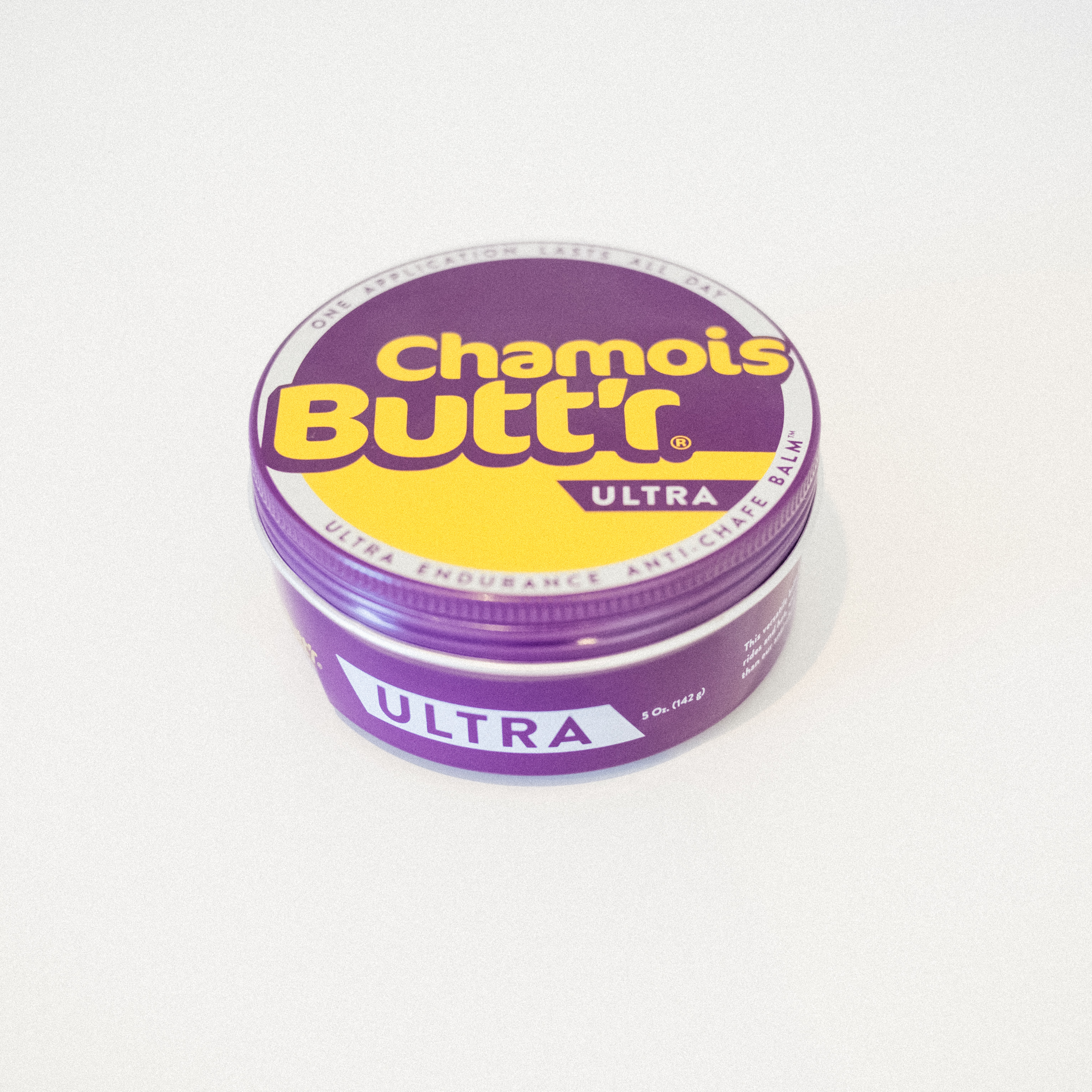
➕ Long lasting
➕ Lightly minty
➖ Moderately expensive
➖ No women's option
Chamois Butt'r Ultra Balm is very similar to Happy Bottom, but this option is a little more greasy and moderately more resilient. It's also scented with peppermint oil, so it's slightly minty where Happy Bottom isn't. This isn't a super minty option though, like Mad Alchemy or even Assos. Sadly, unlike Happy Bottom, it doesn't come in travel-sized options or in a women's pH either.
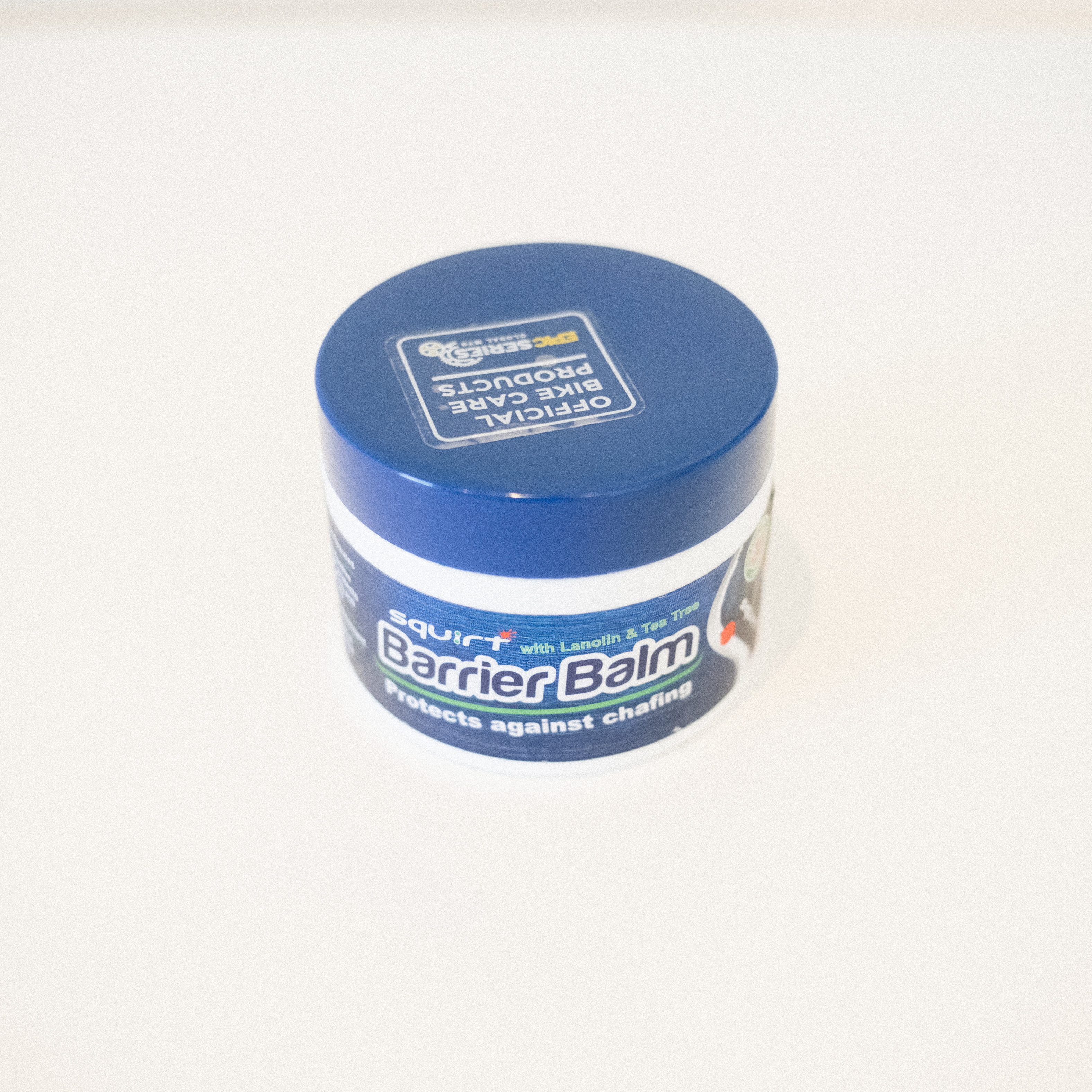
➕ Incredibly thick
➕ Very hard to dislodge
➖ Hard to wash off your hands
Squirt Barrier Balm is the thickest of the bunch, with a consistency much more like a grease than a cream. It comes in 6g sachets, 20g, and 100g pots, and is hard to wash off, making it ideal for prolonged wet rides or triathlons. The scent is quite a strong Tea Tree, and it contains lanolin, so it isn't vegan. It doesn't come in women's or travel-sized options, but for hours in a deluge, this is my pick.
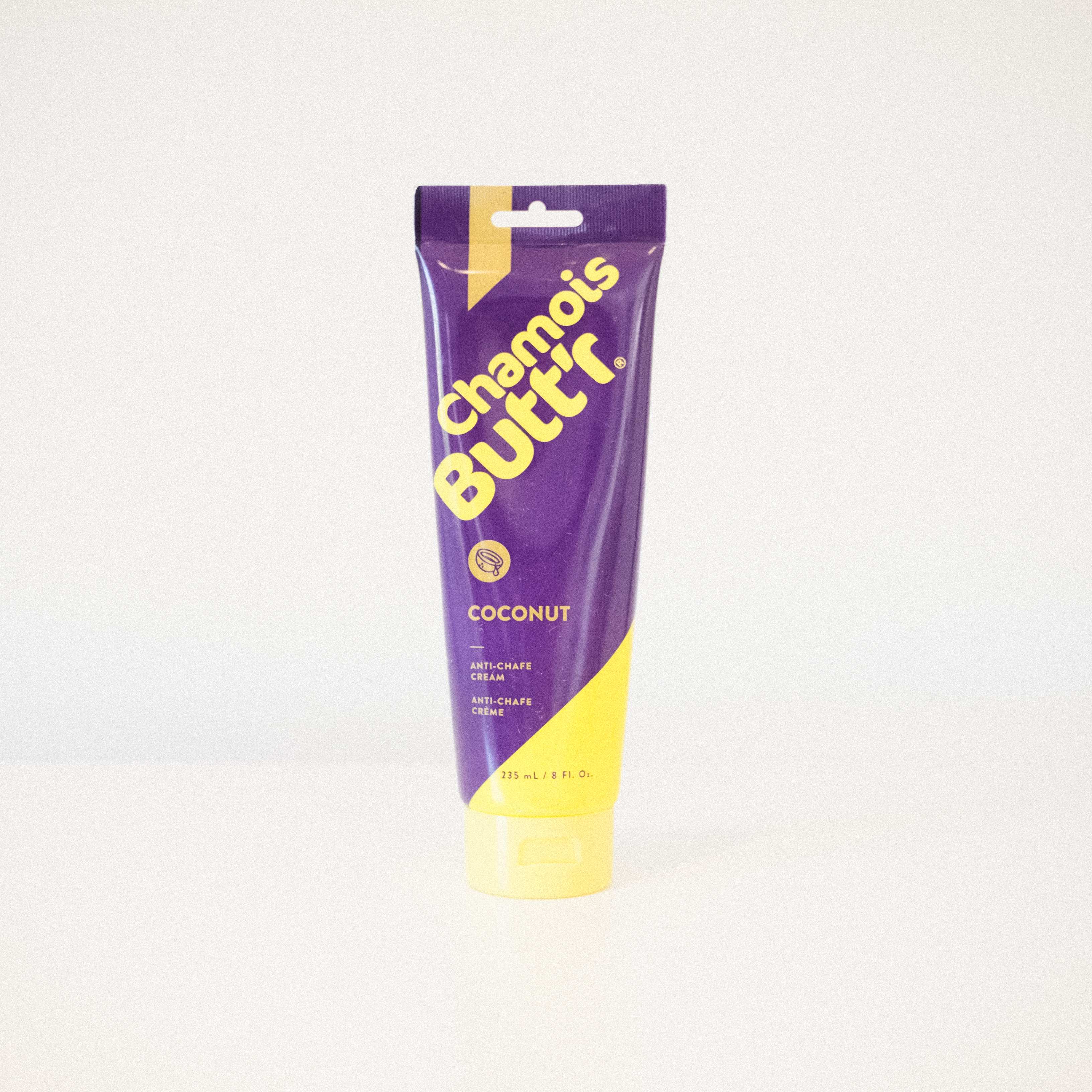
➕ More natural than the original
➕ Neutral scent
➖ More expensive
Chamois Butt'r Coconut feels much like the original, but is made with coconut oil and shea butter instead of mineral oils and paraffin. There's a slight premium to be paid to reflect the change of formula, and you can still get it in the single-serving sachets for out and about. There’s no women-specific pH option, but it’s still suitable for women.
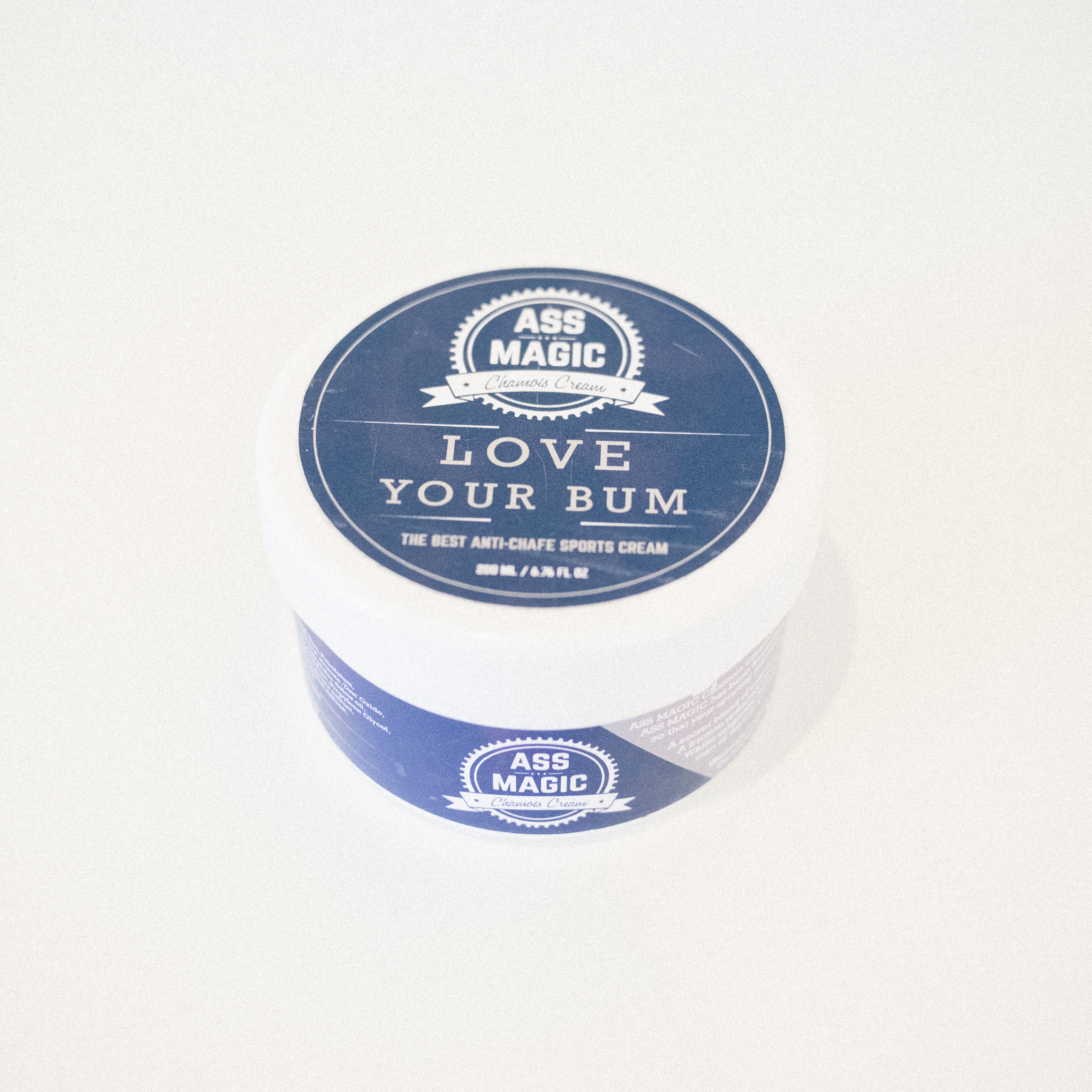
➕ Thick consistency
➕ Lovely smell
➖ No women's option
Ass Magic is very similar in feel to Assos Chamois Crème, but instead swaps the menthol feel for more of a tea tree and citrus aroma. It's a great do-it-all option that isn't greasy and is relatively cheap too in terms of price per millilitre. The only real downside is a lack of a woman's pH.
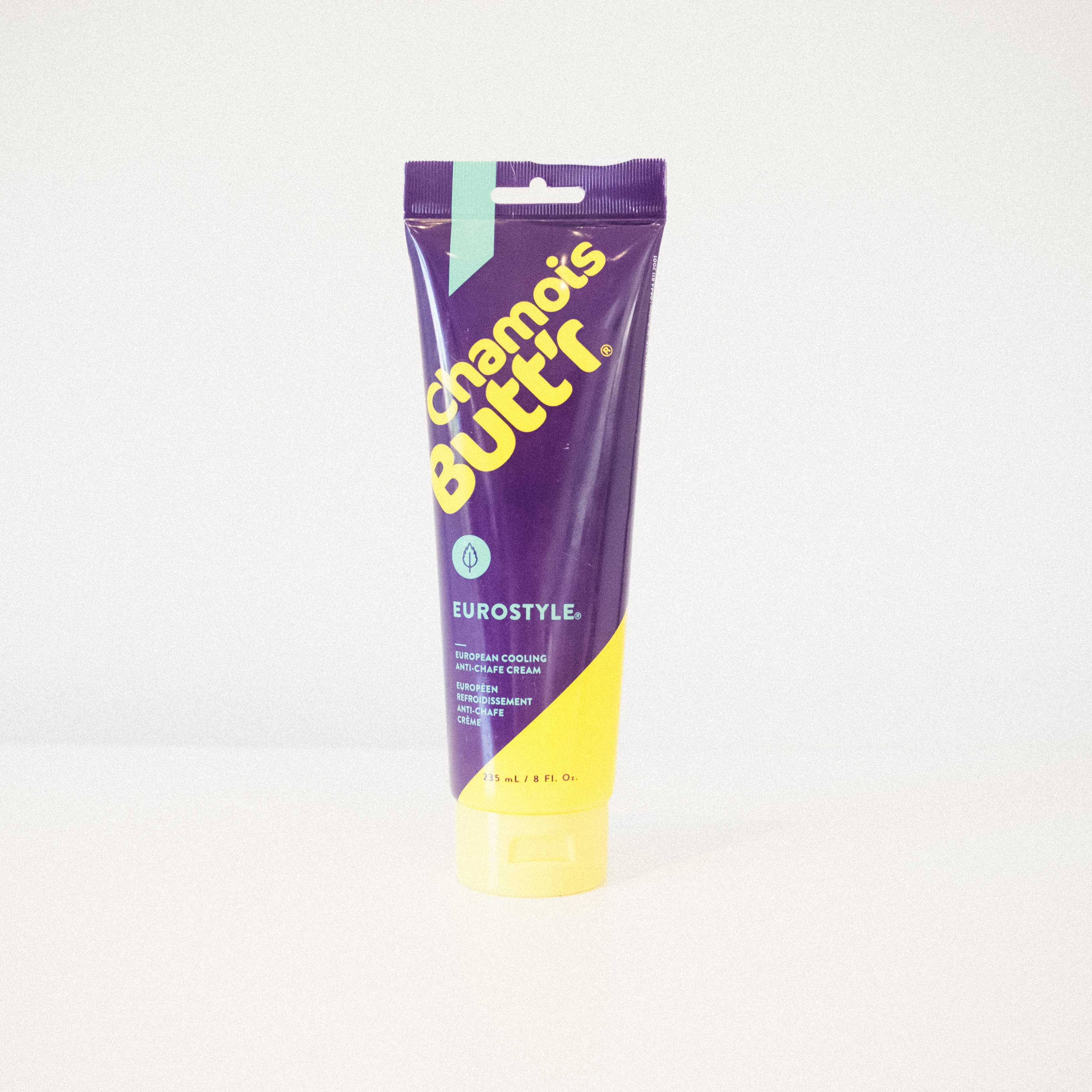
➕ Tube application
➕ Minty fresh
➖ More expensive than the original
➖ No women's option
Given the choice, I'd take a tube over a tub anytime. The problem is that most menthol options come in a tub. If you want minty and a tube, then this is the one for you. The consistency is the same as you get for the Chamois Butt'r Original and Coconut, but with a bit of extra freshness and some witch hazel. It does come in travel portions, but not in women's pH, and there is a slight premium over the original.
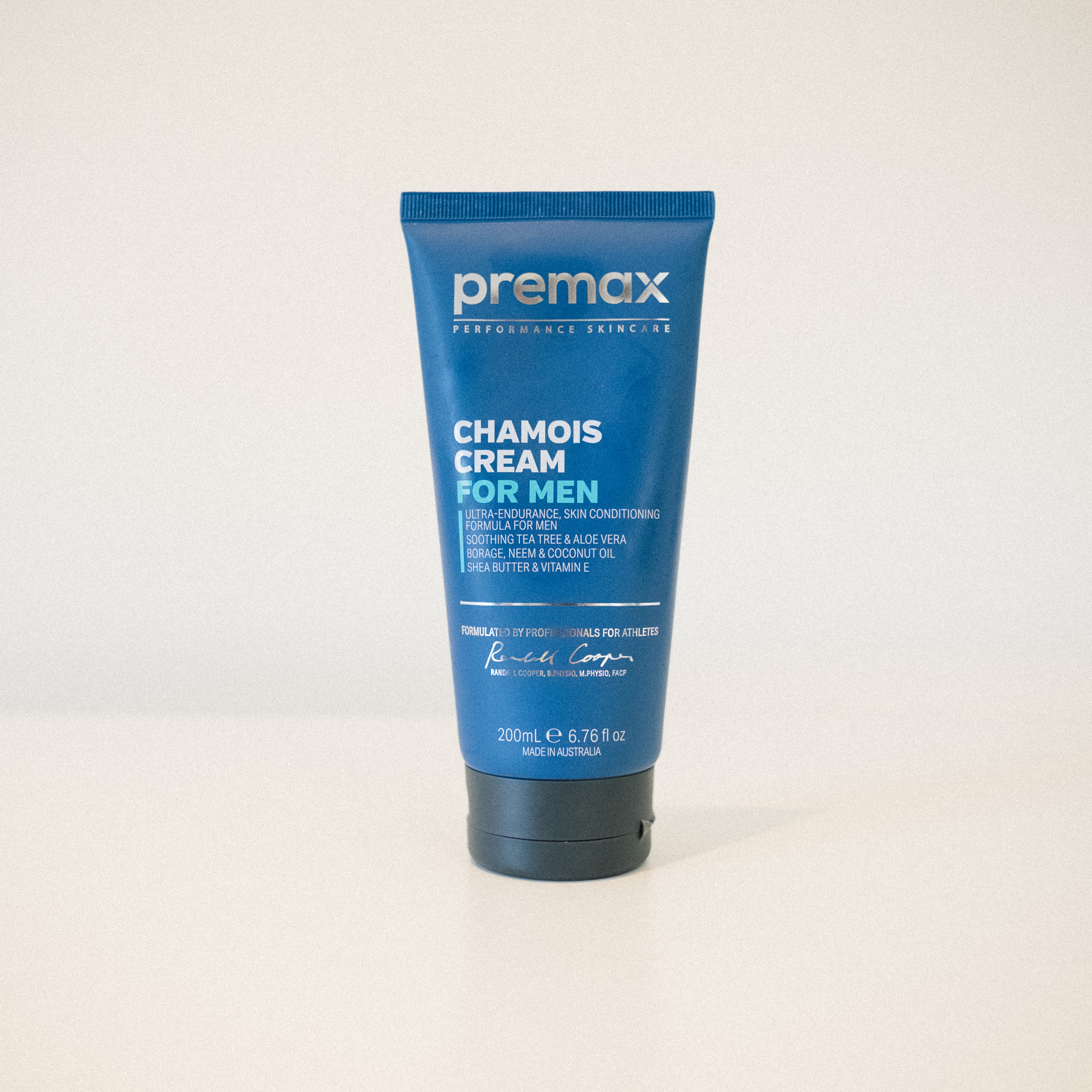
➕ Neutral smell
➕ Non-greasy
➖ A little thin
'Plain' is rarely an adjective associated with praise, but with the Premax Chamois Cream, I found that plain was a good thing. It's mostly odourless, never feels sticky or sloppy, and comes in a tube. It's a little thin feeling and lacks travel sizes, but it does come in a women's pH option. For a first-timer, it’s about as inoffensive as putting cream on your bum can get.
Last updated on 6th of November 2025 We checked that all the products were still current and added women's specific options and advice where relevant.
How to choose the best chamois cream for you
If you've got this far and are still wondering what chamois cream is, or how it's used, then worry not. I'm going to unravel this most delicate of topics with as much tact as I can so that we all get out of here in as much comfort, both physically and mentally, as possible.
Choosing the best chamois cream for you will probably take a small amount of trial and error, but that doesn't mean we're going to send you out into the wilderness alone - we've got a few tips to steer you.
You should start by considering the riding you'll do. Firstly, how long for? If you're regularly doing all-day rides, something with a little more durability will be better than a less viscous cream that soaks into your skin and stops lubricating.
Secondly, how warm is a typical ride? Creams with added menthol or improved cooling properties will be better than those without.
Thirdly, will your ride be wet or dry? Wet weather will likely wash away more cream-based options, whereas those with a thicker consistency will stay the course.
Below, we have a few FAQ's which may help guide you further.
What is chamois cream used for?
Chamois cream is there to reduce the friction between you and your cycling shorts, specifically the 'chamois pad', which is the foam insert sewn into them that provides padding while you ride. Even if you have the optimum combination of saddle and shorts, there's still going to be movement in the system, and so lubricating the interface helps reduce the possibility of any saddle sores.
Skin-to-skin rubbing as you pedal can also cause discomfort, which chamois cream can address.
Some are creamy, some are more of a greasy paste, but they all do the same job. It's just a case of finding which one works for you.
Is chamois cream better than Vaseline?
Or any other non-specific alternative for that matter?
Yes, though that's not to say Vaseline won't do the job too. Chamois cream washes out easier from a cleaning point of view, and after a few minutes, once it's worn in, it won't feel like you've sat in grease. If you want something thick and waterproof, then Squirt Barrier Balm is the best. What's more, the best chamois cream products contain things to aid skin repair, moisturise, and act as cooling and soothing agents too, rather than simply being petroleum jelly.
Do I need female specific chamois cream?
Not necessarily, but if you're unsure, it's best to err on the side of caution. Women's specific chamois creams are formulated with a different pH than male (or 'genderless') ones, which helps protect your natural balance and reduces the risk of vaginal infections. That said, don’t get too carried away by a product being labelled as female - unisex or standard creams can be just as effective. The standard Chamois Butt’r is my go-to, and I’ve never had any issues. As with everything, finding the best chamois cream for you may take some trial and error.
Should I always use chamois cream?
Only if you want to. I ride almost every day, and have a saddle and shorts combination that can allow me to ride in comfort for a good few hours without, but if I'm testing something new, or am feeling a little sore I slap some on. Other friends and colleagues can't fathom how anyone would ride without creaming up first. It's all a matter of personal preference.
The weather can also have an effect on whether you need chamois cream. In hot weather, sweat can increase irritation, while wet rides may induce "trench groin" (sorry!) and increased discomfort.
Where do you apply chamois cream?
You can either apply it directly to the chamois pad of your shorts (this is where a tube is a lot easier than a tub), and rub it in a little with your fingers, or you can pop some on your fingers before a ride and apply it directly to your rear end. Aim for the sit bones, as this is where most of the load is borne and where saddle sores will occur primarily, but colouring outside the lines (so to speak) is no bad thing.
Putting too much on, or applying it in the wrong area, has zero downsides other than using a bit more cream, so experiment with where it works for you. In general, it's easier to be more precise when applying to your skin than to your seat pad, so your chamois cream should go further.
If you're a rider who experiences rubbing between your legs and the saddle or between your legs and your groin, obviously, these are the places to aim for. Your ride position may also affect where discomfort occurs.
The latest race content, interviews, features, reviews and expert buying guides, direct to your inbox!

Will joined the Cyclingnews team as a reviews writer in 2022, having previously written for Cyclist, BikeRadar and Advntr. He’s tried his hand at most cycling disciplines, from the standard mix of road, gravel, and mountain bike, to the more unusual like bike polo and tracklocross. He’s made his own bike frames, covered tech news from the biggest races on the planet, and published countless premium galleries thanks to his excellent photographic eye. Also, given he doesn’t ever ride indoors he’s become a real expert on foul-weather riding gear. His collection of bikes is a real smorgasbord, with everything from vintage-style steel tourers through to superlight flat bar hill climb machines.
- Emily TillettContributor
